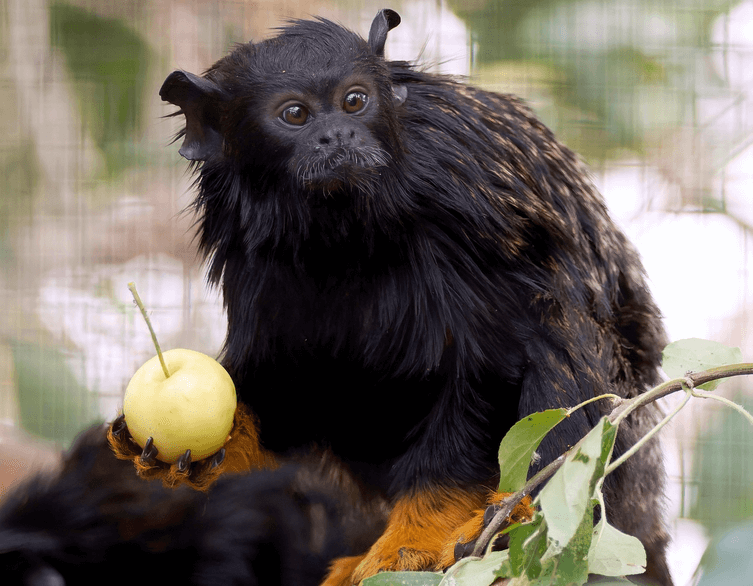How Budapest Zoo Advances Science (And Why You Should Care)

Every November 3rd, Hungary celebrates the Day of Hungarian Science, marking the anniversary of when Count István Széchenyi—known as “the greatest Hungarian”—pledged a year’s worth of his estate’s income to establish what would become the Hungarian Academy of Sciences back in 1825. It’s a pretty big deal in Hungarian culture, celebrating the pursuit of knowledge and scientific advancement. But here’s something that might surprise you: one of Budapest’s most popular tourist attractions, the Budapest Zoo, plays a much bigger role in advancing science than most visitors realize.
Where Science Meets Safari
Think about what happens when you visit a zoo. You’re probably focused on snapping photos of adorable red pandas, watching penguins waddle around, or trying to spot that elusive snow leopard hiding in the rocks. But behind every animal enclosure, every feeding schedule, and every breeding program, there’s an entire universe of scientific research happening. Welcome to the fascinating world of zoo biology, or as the professionals call it, “zookeeping science.”
Zoo biology is basically the Swiss Army knife of academic disciplines. It pulls together knowledge from countless fields—biology, zoology, physics, animal husbandry, conservation biology, pedagogy, economics, and even energy management. When you think about everything that goes into running a modern zoo, it makes sense. Someone has to figure out the perfect temperature for tropical birds, design enrichment activities that keep intelligent primates mentally stimulated, calculate nutritional requirements for animals from every continent, and plan breeding programs that maintain genetic diversity across international zoo populations.
Discoveries That Changed Everything
Here’s where things get really interesting. Many facts we take for granted about the natural world actually came from zoo research. For some animal species, we literally have no field studies telling us basic information like gestation periods—everything we know comes from observations made in zoos. These insights don’t just satisfy scientific curiosity either. Zoo research gets applied directly to wildlife conservation programs in the wild, helping protect endangered species in their natural habitats.
But the contributions go way beyond wildlife biology. One of the earliest and most significant zoo-based discoveries relates to something absolutely fundamental to modern medicine: blood circulation. William Harvey, the scientist who described how blood circulates through the body, used observations from the royal menagerie at Windsor to help clarify how the cardiovascular system works. Before Harvey’s 1628 publication, nobody really understood this. Today, it’s foundational knowledge for life sciences and medicine.
Best deals of Budapest
Another breakthrough came from research on rhesus macaques at Frankfurt Zoo, leading to the identification of the Rh factor in human blood. That “Rh” in your blood type? It’s literally short for “rhesus,” named after the monkeys whose blood helped scientists make this life-saving discovery. And here’s a random but delightful fact: the now-universal practice of providing salt licks for livestock worldwide originated from zoo research figuring out how to meet animals’ sodium requirements.
Budapest Zoo’s Scientific Legacy
Budapest Zoo, founded in the 1860s, has been at this game for nearly 160 years. The zoo’s founders explicitly stated that one of the institution’s core purposes was to create opportunities for “scientific observation.” That wasn’t just fancy talk—they meant it, and the zoo has delivered on that promise consistently ever since.
Over the decades, Budapest Zoo has contributed to countless research projects, providing information, study materials, and expertise across numerous fields. The zoo’s staff have participated in developing artificial insemination techniques for rhinoceroses, figuring out proper husbandry methods for species rarely kept in captivity, and preserving the institution’s own rich historical legacy. From cutting-edge reproductive science to archival preservation, Budapest Zoo’s employees contribute to expanding humanity’s collective knowledge in remarkably diverse ways.
Science for Everyone
But here’s the thing that really matters for visitors: good zoos don’t just do science behind closed doors. They share it with you. Budapest Zoo has a long tradition of science communication and public education. Those informational signs next to animal enclosures? That’s science communication. The programs organized by the zoo’s educational staff? Science communication. The special experience programs, the zoo’s website, and even its social media presence? All designed to help the public learn more about biodiversity, ecological interconnections, and the conservation challenges threatening species survival.
Training the Next Generation
Everyone knows Budapest Zoo plays an important educational role for school groups and families. But the zoo’s educational impact extends much further than grade-school field trips. Budapest Zoo serves as a crucial training ground for university and college students pursuing careers in veterinary medicine, biology, conservation, and related fields.
The partnership with the University of Veterinary Medicine is particularly close. Since 2015, the university’s Department of Zoo and Wildlife Animal Health operates as an off-site teaching facility directly within the zoo. Students get hands-on experience working with exotic species they’d never encounter in traditional veterinary practice. But the collaborations don’t stop there. Budapest Zoo works with institutions ranging from the Hungarian University of Agriculture and Life Sciences to the Moholy-Nagy University of Art and Design.
Students from universities across Hungary complete professional internships at the zoo or conduct observations for their theses. It’s entirely possible that every single university and college in Hungary has sent students to Budapest Zoo at some point. Meanwhile, zoo staff members serve as guest lecturers, thesis advisors, examination committee members, and sometimes even as course instructors at various universities.
An International Scientific Hub
Thanks to Budapest Zoo’s reputation as one of the world’s leading zoological institutions, the educational exchange flows in both directions across international borders. Students and interns arrive from around the globe to learn from the zoo’s expertise, bringing diverse perspectives and forming professional networks that strengthen international conservation efforts.
Why Tourists Should Care
So what does all this scientific activity mean for you as a tourist visiting Budapest? It means that when you buy a ticket to Budapest Zoo, you’re not just getting entertainment—you’re supporting genuine scientific research and conservation efforts that ripple outward to protect wildlife worldwide. The zoo isn’t a museum displaying static exhibits. It’s a living laboratory where researchers are actively expanding our understanding of animal behavior, physiology, and conservation biology.
It also means the information you’re getting during your visit is based on real scientific observation and expertise, not just cute animal facts pulled from Wikipedia. The staff designing those exhibits and writing those educational signs? Many of them are actively contributing to scientific literature and training the next generation of veterinarians and biologists.
More Than Just a Day Out
Budapest Zoo sits in the beautiful City Park, easily accessible from Heroes’ Square and surrounded by other major attractions like Vajdahunyad Castle. Most tourists visit expecting a pleasant afternoon looking at animals—and they definitely get that. The zoo’s stunning Art Nouveau architecture alone makes it worth the trip. But now you know there’s something deeper happening behind those historic buildings and thoughtfully designed enclosures.
The next time you’re watching those clever elephants solving puzzle feeders or observing keepers training sea lions, remember that you’re witnessing applied animal behavior science in action. When you read about endangered species conservation programs, that’s not abstract charity work happening somewhere far away—it’s concrete scientific effort being coordinated through institutions like this one.
Science Meets Tradition
The timing of Hungary’s Day of Science in early November makes it a perfect moment to appreciate how Budapest Zoo bridges past and future. Just as Count Széchenyi recognized that investing in knowledge would benefit future generations, the zoo’s founders understood that careful scientific observation of the natural world would yield insights benefiting humanity for decades to come. They were right on both counts.
Nearly 160 years later, Budapest Zoo continues that legacy, combining cutting-edge reproductive technologies with traditional animal husbandry wisdom, merging international scientific collaboration with deep local expertise, and translating complex research findings into accessible educational experiences for visitors from around the world.
So yes, absolutely visit Budapest Zoo to see adorable animals and photograph those gorgeous historic buildings. But take a moment to appreciate that you’re also visiting one of Hungary’s important scientific institutions—a place where researchers are actively working to understand, protect, and preserve the incredible diversity of life on Earth. That’s pretty special, and it makes your zoo ticket feel like an even better investment.
Related news
Related events

















